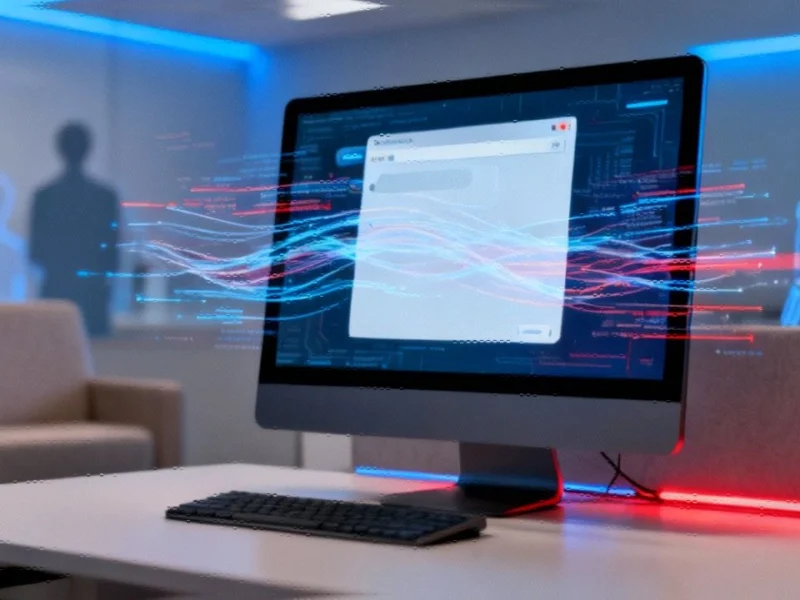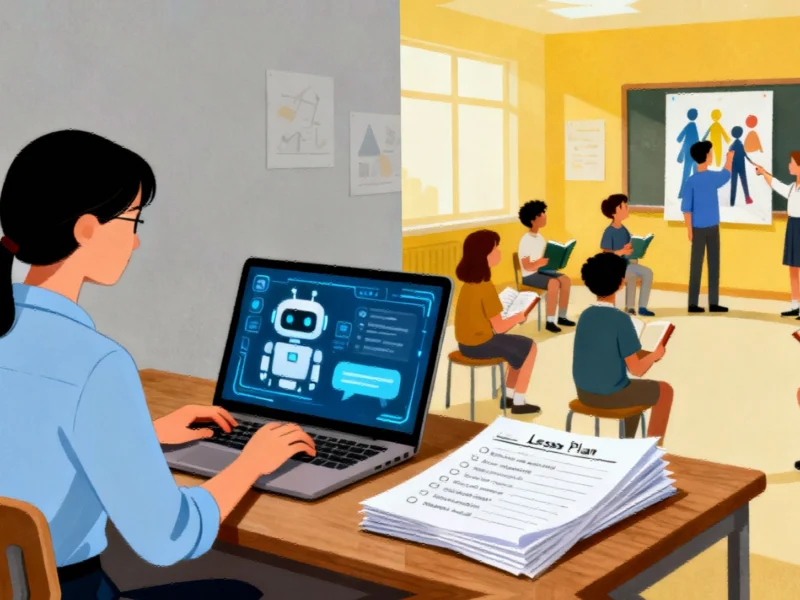The Corporate AI Justification Trend
In boardrooms across the technology sector and beyond, artificial intelligence has become the go-to explanation for workforce reductions. What began as cautious whispers about AI’s potential impact has evolved into bold corporate announcements framing layoffs as necessary technological evolution. Companies including Accenture, Salesforce, and Microsoft now openly attribute staff reductions to AI implementation, presenting these moves as essential for maintaining competitiveness in an increasingly automated landscape.
This shift in messaging represents a significant departure from earlier corporate approaches. During the initial ChatGPT explosion, most organizations avoided directly linking AI to job cuts. Today, the narrative has flipped completely, with executives positioning AI-driven layoffs as evidence of forward-thinking leadership and operational efficiency.
The Skeptical Academic Perspective
Not everyone accepts these explanations at face value. Fabian Stephany, Assistant Professor of AI & Work at the Oxford Internet Institute, expresses significant skepticism about whether current layoffs genuinely stem from AI-driven efficiency gains. “It’s rather really a projection into AI in the sense of ‘We can use AI to make good excuses,'” Stephany told CNBC, suggesting companies might be using AI as a convenient scapegoat for decisions driven by other factors.
This perspective gains credibility when examining broader industry developments that have unfolded alongside AI adoption. Many corporations significantly expanded their workforces during the pandemic boom years, creating staffing levels that became unsustainable as economic conditions shifted. The current wave of layoffs may represent a market correction rather than a purely technological transformation.
The Return-to-Office Parallel
Corporate America appears to have developed multiple strategies for reducing headcount without traditional layoffs. Return-to-office mandates have emerged as another controversial method for encouraging voluntary departures. When employees cannot or will not comply with new office attendance requirements, they often resign independently—saving companies substantial severance costs while achieving the same workforce reduction goals.
This pattern suggests that blaming AI for layoffs fits into a broader trend of using external justifications for workforce optimization. The approach allows companies to frame difficult decisions as inevitable responses to external forces rather than strategic choices made by leadership.
Investor Perception and Market Positioning
Attributing layoffs to AI adoption offers significant branding and positioning benefits for corporations. Presenting workforce reductions as driven by cutting-edge technology rather than financial pressures can enhance a company’s image among investors and analysts. This narrative positions organizations as technologically advanced and efficiency-focused, potentially boosting stock valuations despite workforce reductions.
The strategy aligns with broader market trends where technological adoption signals corporate health. Companies emphasizing their AI integration often receive more favorable coverage and analyst ratings, creating powerful incentives to highlight technological factors when explaining organizational changes.
Historical Context and Research Findings
Recent research challenges the assumption that AI represents an unprecedented threat to employment. A Yale Budget Lab study found little evidence that AI has displaced workers more severely than previous technological innovations like computers or the internet. This research suggests that while job roles may evolve, mass technological unemployment remains unlikely in the near term.
Meanwhile, Goldman Sachs Research estimates that AI could ultimately affect 6-7% of the US workforce, though they conclude the impact will likely be temporary. This perspective aligns with historical patterns where technological disruption initially displaces some workers but eventually creates new roles and opportunities.
Broader Industry Implications
The debate over AI’s true role in workforce reductions reflects larger questions about corporate transparency and technological accountability. As companies navigate recent technology implementations, the distinction between genuine technological displacement and strategic workforce restructuring becomes increasingly blurred.
Other sectors show similar patterns of organizational change. For instance, Nestle’s recent restructuring demonstrates how multiple factors—including technological efficiency—can drive workforce decisions across industries.
The Environmental and Research Connection
Interestingly, discussions about technological impact extend beyond workforce considerations. Recent climate research on tropical freshwater systems demonstrates how new technologies are reshaping our understanding of complex systems across multiple domains. Similarly, updated tropical research shows how technological advances continue to transform scientific understanding.
These parallel developments highlight how technological progress affects multiple aspects of business and society simultaneously, creating complex interconnections between workforce strategies, environmental understanding, and related innovations across sectors.
Medical Technology Parallels
The pattern of technological implementation driving organizational change extends to healthcare as well. Recent advances in dual-drug strategies for aggressive cancers demonstrate how technological and methodological innovations can transform established practices while creating new operational requirements.
Even seemingly unrelated sectors like gaming show similar patterns of technological adaptation, as evidenced by recent gaming industry successes that leverage new technological capabilities to achieve market impact.
Looking Forward
The central question remains whether AI represents a genuine technological revolution driving workforce changes or a convenient narrative for decisions that would occur regardless. The evidence suggests a complex middle ground: while AI undoubtedly enables new efficiencies, its role in specific layoff decisions may be more nuanced than corporate announcements suggest.
As organizations continue to navigate this transition, transparency about the multiple factors driving workforce decisions—including market conditions, strategic repositioning, and genuine technological transformation—will be essential for maintaining stakeholder trust and managing the human impact of organizational change.
This article aggregates information from publicly available sources. All trademarks and copyrights belong to their respective owners.
Note: Featured image is for illustrative purposes only and does not represent any specific product, service, or entity mentioned in this article.



